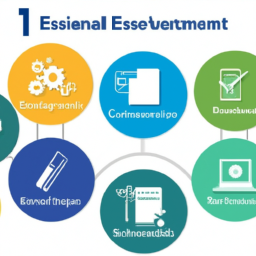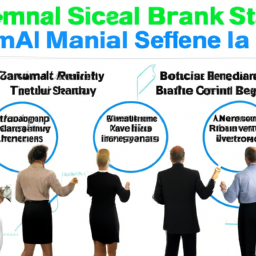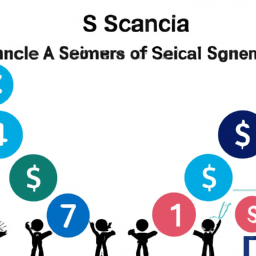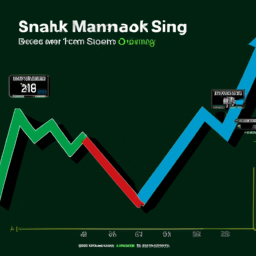Are you preparing for the Six Sigma bank exam? Don’t make these common mistakes!
Understanding Six Sigma principles is crucial, as is effectively applying statistical tools. Make sure to familiarize yourself with the exam format and don’t underestimate the importance of data analysis and interpretation.
And whatever you do, don’t forget to practice sample questions and mock exams.
In this article, we’ll explore nine common mistakes to avoid in the Six Sigma bank exam. Let’s dive in and ensure your success!
Key Takeaways
- Lack of understanding and misconceptions about quality improvement and Six Sigma’s potential benefits can hinder success in the Six Sigma Bank Exam.
- Ineffective use of statistical tools, such as DMAIC methodology and hypothesis testing, can lead to incorrect analysis and interpretation of data.
- Inadequate exam preparation, including a lack of understanding of question types and neglecting exam guidelines, can negatively impact performance in the exam.
- Importance of data analysis and interpretation, including data visualization and correlation analysis, to accurately answer questions and make informed decisions.
Lack of Proper Understanding of Six Sigma Principles
You need to make sure you understand the basic principles of Six Sigma to avoid any mistakes on the bank exam.
One common mistake is having misconceptions about quality improvement. Many people believe that Six Sigma is solely focused on improving product quality, but it actually encompasses a broader approach to process improvement. This misconception can lead to a narrow understanding of Six Sigma’s potential benefits and limit its effective implementation in a banking context.
Another mistake is underestimating the role of process improvement. Some may overlook the importance of streamlining processes, reducing variation, and eliminating defects in achieving operational excellence. By neglecting this aspect, the effectiveness of Six Sigma in improving overall performance can be compromised.
Therefore, it is crucial to have a comprehensive understanding of Six Sigma principles, including its emphasis on process improvement, to avoid such misconceptions and maximize its potential. This understanding will also help in avoiding the subsequent mistake of failing to apply statistical tools effectively.
Failure to Apply Statistical Tools Effectively
When preparing for the exam, it is important to effectively apply statistical tools to avoid errors.
The ineffective use of DMAIC methodology can lead to flawed analysis and incorrect conclusions.
Understanding the proper application of statistical tools such as hypothesis testing, control charts, and regression analysis is crucial.
Misinterpretation of process capability analysis is another common mistake to avoid.
Accurately assessing the capability of a process to meet customer requirements by correctly interpreting the Cp and Cpk indices is essential.
Pay attention to the assumptions and limitations of each statistical tool and use them appropriately.
Remember to analyze data thoroughly and use statistical techniques to draw meaningful conclusions.
Practice applying statistical tools in different scenarios to build confidence and proficiency.
Inadequate Preparation for the Exam Format
To adequately prepare for the exam format, ensure that you have a clear understanding of the types of questions that may be asked and familiarize yourself with the exam structure. This will help you develop effective time management strategies and prioritize your study materials accordingly.
It is also crucial to thoroughly study the exam guidelines, as they provide valuable insights into the expectations and requirements of the exam. By understanding the format and guidelines, you can tailor your study plan to focus on areas that are likely to be tested and allocate your time wisely. Neglecting to study the exam guidelines can lead to wasting precious time on irrelevant topics or missing out on important information. Therefore, it is essential to give proper attention to exam format and guidelines before moving on to other aspects of exam preparation.
Overlooking the Importance of Data Analysis and Interpretation
By neglecting the importance of data analysis and interpretation, you may struggle to answer questions that require drawing conclusions and making informed decisions based on the given data.
Data visualization plays a crucial role in understanding complex datasets. It allows you to identify patterns, trends, and outliers more easily, enabling you to make accurate interpretations.
Correlation analysis helps you determine the relationship between different variables, aiding in the identification of cause and effect. Without these tools, you may misinterpret data and reach incorrect conclusions.
Inadequate data analysis can lead to flawed decision-making, impacting the overall success of your project or business.
Neglecting to Practice Sample Questions and Mock Exams
If you neglect to practice sample questions and mock exams, you may struggle to perform well on the actual test. Practice methods are crucial for success in any exam, and the six sigma bank exam is no exception.
By practicing sample questions, you familiarize yourself with the format and types of questions that may appear on the test. This allows you to develop effective strategies and improve your problem-solving skills.
Additionally, mock exams simulate the actual testing conditions, helping you manage your time effectively. Time management is key during the exam, as you must answer a significant number of questions within a limited timeframe.
Frequently Asked Questions
What Are Some Common Mistakes to Avoid in the Six Sigma Bank Exam Related to the Lack of Proper Understanding of Six Sigma Principles?
When it comes to the Six Sigma bank exam, one common mistake to avoid is the lack of proper understanding of Six Sigma principles. This can lead to a number of errors, such as misinterpreting data or failing to apply the correct methodology.
How Can One Effectively Apply Statistical Tools to Avoid Mistakes in the Six Sigma Bank Exam?
To effectively apply statistical tools and avoid mistakes in the Six Sigma bank exam, you must first understand the principles of Six Sigma.
By applying statistical techniques such as hypothesis testing, regression analysis, and control charts, you can analyze data and make informed decisions.
Additionally, ensuring proper data collection and accuracy is crucial in avoiding errors.
What Are Some Important Tips for Adequate Preparation for the Exam Format in the Six Sigma Bank Exam?
To adequately prepare for the Six Sigma Bank Exam, it is important to focus on exam format tips and study techniques.
Understanding the structure of the exam and familiarizing yourself with the types of questions that may be asked can help you prepare more effectively.
Additionally, developing a study plan, organizing your materials, and practicing with sample questions can enhance your chances of success.
Why Is Data Analysis and Interpretation Important in the Six Sigma Bank Exam, and What Mistakes Should Be Avoided in This Area?
In the Six Sigma Bank Exam, data analysis and interpretation are crucial because they help you make informed decisions and identify areas for improvement. It is important to understand the importance of statistical tools in this process.
However, there are common mistakes that should be avoided. These include not properly collecting or organizing data, using incorrect statistical methods, or misinterpreting results. By being aware of these mistakes, you can ensure accurate and reliable data analysis in the exam.
How Can Practicing Sample Questions and Mock Exams Help in Avoiding Mistakes in the Six Sigma Bank Exam?
Practicing sample questions and mock exams is essential for avoiding mistakes in the Six Sigma bank exam. By engaging in these activities, you can familiarize yourself with the exam format and identify any knowledge gaps or areas of weakness.
This allows you to focus your studying efforts and improve your performance. Moreover, mock exams simulate the real exam experience, enabling you to manage your time effectively and reduce test anxiety.
Conclusion
In conclusion, dear reader, mastering the six sigma bank exam requires more than just luck and a passing interest. It demands a deep understanding of the principles, an effective application of statistical tools, and a thorough preparation for the exam format.
Don’t overlook the significance of data analysis and interpretation, for it is the compass that guides you through the treacherous waters of the exam.
And most importantly, practice, practice, practice! Sample questions and mock exams are your secret weapons in conquering this challenging feat.
So, arm yourself with knowledge, wield your statistical tools, and embark on this journey with confidence and determination. Success awaits you!





















